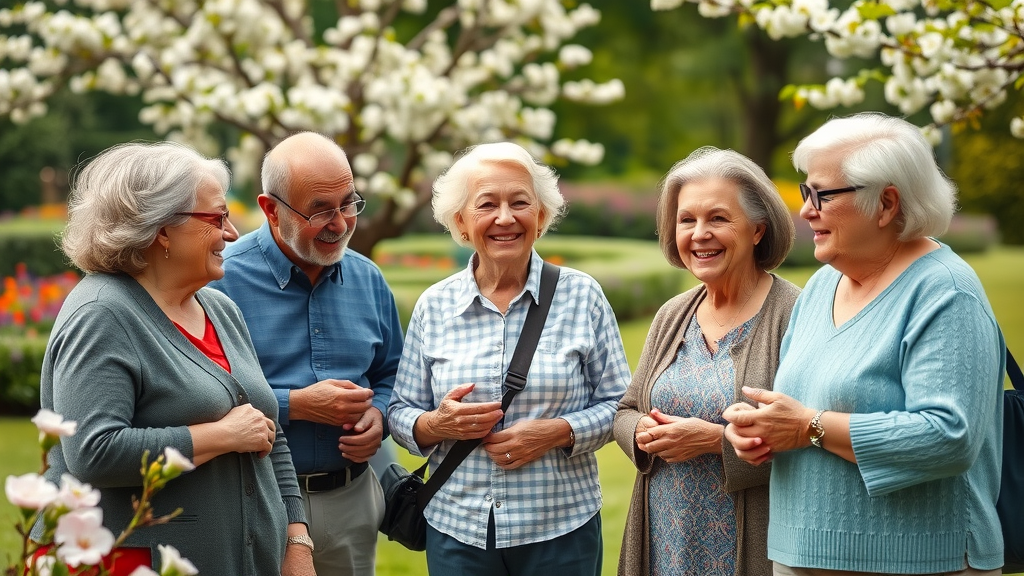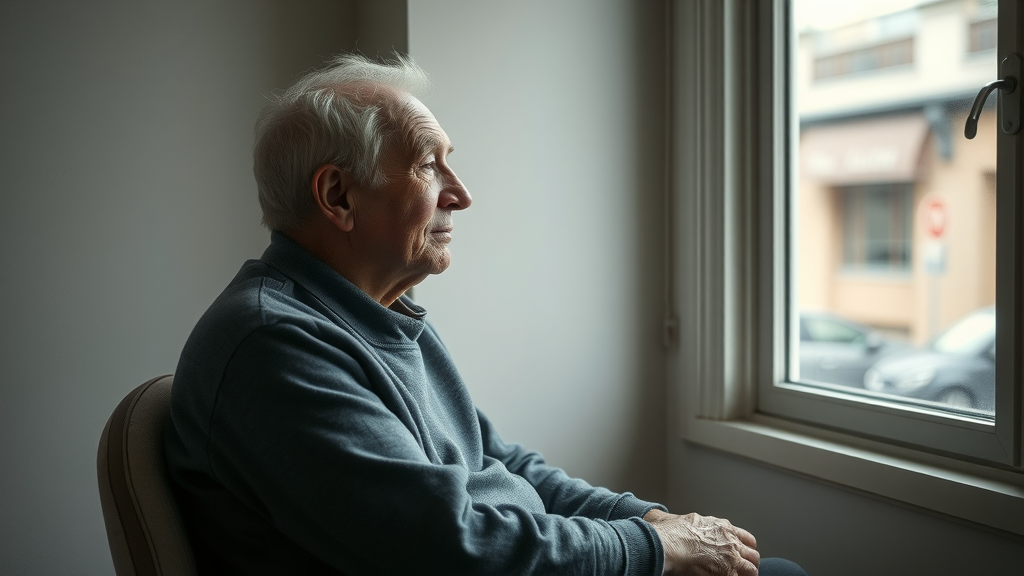“Did you know that adopting just a handful of lifestyle changes can add more than a decade to your lifespan? Discover how evidence-based strategies for healthy aging and longevity can influence every phase of your life.”
Understanding Healthy Aging and Longevity: Definitions, Importance, and Key Distinctions
Defining Healthy Aging and Longevity in Modern Society
Healthy aging and longevity are terms often used together, but they carry distinct meanings critical for anyone interested in extending not just their life expectancy , but their quality of life as well. Healthy aging focuses on preserving physical and mental abilities, independence, and social connections throughout the years. Longevity, on the other hand, refers simply to how many years a person lives. In the modern world, as people age longer than ever before thanks to improved healthcare and a broader understanding of risk factors , the importance of not just adding years to your life—but adding life to your years—cannot be overstated. Adopting a healthy lifestyle that supports both daily energy and long-term resilience is central to achieving both healthy aging and longevity.
The drive for healthy longevity is more than a personal goal; it’s a societal necessity. As the population of older adults grows, public health policies increasingly focus on helping people remain active and engaged, reducing the impact of chronic diseases that often accompany aging. This shift underscores a growing need to understand what genuinely constitutes healthy aging and how you can adopt meaningful changes, whether you’re approaching your senior years or helping an aging loved one.

Older Adults and Changing Demographics: Why Healthy Aging and Longevity Matters and how to live longer
Today’s world is seeing an unprecedented rise in the number of older adults. A recent study revealed that people aged 65 and older represent a growing segment of the population, thanks in part to medical advancements and better awareness of the social determinants of health. But with increased life expectancy comes the pressing need for strategies that promote healthy aging and nurture long-lasting wellness. As the demographic landscape changes, healthy aging and longevity aren’t just personal aspirations—they’re public imperatives. The focus now is on helping older adults maintain independence, mental health , and a high quality of life through their later years.
It’s important to recognize that longevity alone isn’t enough. Older adults face mounting risk factors such as chronic diseases , social isolation , and even cognitive decline. By implementing specific healthy aging interventions—regular physical activity , balanced diets, and staying socially connected—everyone can have a higher chance of living not only longer, but better. Understanding the social, environmental, and biological changes that shape aging helps put these goals well within reach.
Examining Risk Factors for Older Adults on the Path to Longevity
As we pursue healthy aging and longevity, it’s crucial to examine the risk factors that can stand in the way. These include well-known issues such as chronic disease (like heart disease and diabetes), lack of physical activity , and limited access to quality healthcare. However, less obvious challenges—such as stress , mental health issues, and social isolation —are equally influential. Aging adults also contend with biological changes, such as altered immune system responses and decreased capacity for cell repair, making them more susceptible to illness.
Becoming aware of these risk factors empowers older adults and caregivers to seek early interventions, schedule more frequent preventive screenings, and proactively promote healthy lifestyle habits. Research continues to highlight the importance of managing risk through a combination of medical care, lifestyle modification, and sustained social connection. This multifaceted approach is vital for any older adult striving for both longevity and wellness.

Addressing Common Health Outcomes Associated with Aging
As people age, common health outcomes like decreased mobility , cognitive decline , and increased risk of chronic diseases become more prevalent. Managing these conditions requires a proactive stance—addressing them early with lifestyle choices such as engaging in regular physical activity and eating a balanced, healthy diet. It’s also important to consider preventive healthcare, including regular screenings for cancer, heart disease, and early signs of cognitive change, which can improve health outcomes and prolong independence.
Beyond medical interventions, supporting mental health and fostering strong social networks play an equally critical role. Outlets for community engagement, meaningful relationships, and mental stimulation protect against loneliness and help maintain a high quality of life throughout older adulthood. By focusing on comprehensive, evidence-based solutions, individuals can take an active role in shaping their own aging experience.
The Science of Healthy Aging and Longevity: How Biology Influences Lifespan
Genetic and Lifestyle Contributions to Healthy Aging
Both genetics and lifestyle profoundly influence healthy aging and longevity. While some people are genetically predisposed to longer life, lifestyle factors—including physical activity , a healthy diet , and strong social ties—are far more controllable and impactful in the general population. Clinical trials have shown that regular exercise and balanced nutrition can reduce the burden of chronic diseases and support better health outcomes for older adults, regardless of their genetic background.
Beyond what we inherit, our day-to-day choices play a significant role in defending against environmental stressors and slowing the biological processes of aging. A holistic approach that blends genetic awareness with proactive lifestyle adaptations is proven to promote healthy longevity and reduce risk factors over time.

Cognitive Health: Preserving Memory and Mental Agility as You Age
Protecting cognitive health is one of the most urgent goals as people age, as cognitive decline can undermine independence and quality of life. Regular mental stimulation—such as reading, puzzle-solving, or lifelong learning—has been shown to maintain sharpness and delay the onset of age-related cognitive diseases. These activities, coupled with good sleep hygiene and managed stress, give the brain the support it needs to adapt and remain resilient over time.
Even small daily habits can have far-reaching benefits on cognitive health. For instance, social engagement protects against memory loss, while a healthy diet rich in omega-3 fatty acids and antioxidants supports brain plasticity. By prioritizing both physical and mental health, older adults can experience meaningful, long-lived cognitive function that keeps them active and engaged.

Physical Activity and Its Direct Impact on Longevity - healthy lifestyle for seniors
Among the most consistently proven elements of healthy aging and longevity is regular physical activity. Clinical trials, public health data, and decades of research reveal a direct link between movement and longer, healthier lives. Exercise reduces inflammation , improves cardiovascular function , and supports cognitive health , all of which are essential for combating common age-related conditions like heart disease and diabetes.
Reducing inflammation
Improving cardiovascular function
Supporting cognitive health
In addition, physical activity maintains mobility and balance, reducing the risk of falls and injuries that can have devastating health outcomes in older adults. For those seeking a healthy lifestyle , activities like brisk walking, swimming, gentle yoga, or even regular household chores all contribute to improved longevity and everyday vitality.

Key Risk Factors and Challenges Facing Older Adults on Their Healthy Aging Journey
Recognizing and Addressing Major Risk Factors for Healthy Aging and Longevity
Understanding and minimizing risk factors is crucial for anyone striving for healthy aging and longevity. Major risk factors include the presence of multiple chronic diseases , physical inactivity, a lack of nutritious foods, and limited access to healthcare. Among older adults , a poor healthy diet and insufficient movement are closely tied to poorer health outcomes, according to documented clinical trials.
Equally important is recognizing the influence of mental health conditions, persistent stress, and inadequate social support, which can all lower both life expectancy and quality of life. With a comprehensive approach that tackles all aspects of wellness, older adults can reduce these risk factors and develop a concrete plan to thrive as they age.
Social Isolation Among Older Adults: Effects on Health Outcomes
Social isolation is an increasingly common risk factor faced by aging adults, and its impact should not be underestimated. Studies link social isolation with higher rates of depression, increased mortality, and a greater incidence of chronic disease. For older adults, a lack of regular connection not only affects mental health but also worsens physical health outcomes, with effects similar to other risk factors like obesity or smoking.
Tackling this hidden epidemic involves proactive efforts—such as joining community groups, maintaining family ties, or participating in volunteer work—to ensure that social connections remain strong throughout life. Combating social isolation is essential for promoting healthy aging and protecting the mental, emotional, and physical wellbeing of older adults.

The Role of Mental Health in Achieving Longevity
Mental health is inseparably tied to healthy aging and longevity. Chronic stress, depression, and anxiety can contribute to a host of adverse health outcomes , increasing the risk for physical illnesses and reducing overall life expectancy. Recent clinical trials confirm that addressing mental health challenges—through counseling, therapy, or even mindfulness-based intervention—can profoundly impact long-term wellness.
Chronic conditions
Lack of physical activity
Poor nutrition
Social isolation
Depression and anxiety
By tackling mental health proactively, older adults and caregivers can break the cycle of decline, safeguard functional independence, and drive more positive, lasting health outcomes well into later life.
Exploring the Seven Keys to Longevity and the Five Pillars of Healthy Aging
The Seven Proven Keys to Longevity Explained - longevity secrets
For those seeking a roadmap to healthy aging and longevity , the “Seven Keys to Longevity” provide actionable guidance grounded in robust science. These key elements include regular exercise , thoughtful use of longevity supplements (when recommended by a professional), following a nutrient-dense diet, cultivating meaningful social connections , keeping the mind stimulated, ensuring adequate sleep, and practicing daily stress management. Preventive healthcare—regular checkups and screenings—further strengthens this framework.
Adopting these longevity secrets empowers you to protect against major risk factors and chronic diseases, ensuring you don’t just live longer, but live better. They serve as the foundation for any effective healthy lifestyle plan and remain essential through every stage of adulthood.

Breaking Down the Five Pillars of Healthy Aging for Older Adults
The Five Pillars of Healthy Aging are crucial for anyone aiming to enjoy a vibrant, independent life as they grow older. These pillars—physical activity, balanced nutrition, cognitive health, social connections, and preventive healthcare—address and neutralize many key risk factors that threaten well-being in older adulthood. Each pillar is grounded in clinical evidence showing its impact on extending both lifespan and quality of life.
By balancing all five, older adults can optimize health outcomes, stay resilient against chronic diseases, and enjoy daily activities more fully. The five pillars also serve as a checklist for families and caregivers to ensure their loved ones are supported across every essential area of healthy aging and longevity.
Pillars of Healthy Aging |
Description |
|---|---|
Physical Activity |
Engaging in regular exercise |
Balanced Nutrition |
Eating nutrient-rich foods |
Cognitive Health |
Stimulating mental exercises |
Social Connections |
Maintaining meaningful relationships |
Preventive Healthcare |
Routine health checkups |
Practical Steps for Supporting Healthy Aging and Longevity: Healthy Aging Tips
anti aging Diets for Older Adults: Enhancing Health Outcomes
A proven way to promote healthy aging and longevity is to embrace anti-aging diets tailored for older adults. Diets rich in vegetables, fruits, whole grains, and lean proteins deliver vital nutrients for tissue repair, bone strength, and heart health. All-natural supplements can also help. Limiting processed foods and added sugars helps mitigate risk factors for chronic disease while supporting optimal bodily function. Recent studies show that such a healthy diet is directly linked to both longer lifespan and a greater sense of daily well-being.
Older adults can benefit from consulting a registered dietitian to create a meal plan tailored to their unique needs. Simple changes—like adding more leafy greens, legumes, or fatty fish—can offer transformative benefits, and the effects on health outcomes can be both immediate and lifelong.

Recommended Physical Activity Routines for Different Age Groups
Designing physical activity routines for each age group is pivotal to ensuring healthy aging and longevity. For older adults, moderate-intensity activities like brisk walking, swimming, and gentle cycling are excellent for cardiovascular health and mobility. Strength training and flexibility exercises help maintain muscle mass, bone density, and balance, significantly reducing fall risk.
For those new to physical activity, even shorter sessions—such as 10-minute walks or chair-based movements—are beneficial when done consistently. The ultimate goal is to integrate varied movement into everyday life, strengthening the body’s resilience and enhancing overall quality of life for years to come.
While physical activity and nutrition are foundational, incorporating gentle mind-body practices can further enhance wellness in older adults. For example, exploring the holistic benefits of Tai Chi for energy and balance offers a practical way to support both physical and mental health as part of a comprehensive aging strategy.
Promoting Cognitive Health for Lifelong Learning and Engagement
Maintaining mental sharpness extends far beyond crossword puzzles—continuous learning and social engagement are equally central to cognitive health. Activities such as book clubs, language classes, or digital technology workshops provide opportunities for older adults to stimulate their brains while building community connections. These activities both fight cognitive decline and promote emotional fulfillment.
Staying curious, embracing new experiences, and seeking diverse learning opportunities all contribute to a flexible, resilient mind—an invaluable asset for those aiming for healthy aging and longevity.

Strategies to Strengthen Social Bonds and Prevent Social Isolation
Social connection is one of the most powerful defenses against the negative health outcomes associated with aging. Proactive steps—like joining senior centers, volunteering, or staying in touch with friends and family—help prevent the isolation that can undermine both mental and physical health in older adults. Communities that encourage intergenerational activities also report better emotional resilience and healthier life satisfaction scores.
With the right supports in place, anyone can maintain a thriving social life into their later years, further reinforcing the foundations of healthy aging and longevity.
Competing Interests: Barriers and Opportunities in Promoting Healthy Aging and Longevity
How Economic, Social, and Cultural Factors Influence Health Outcomes for Older Adults
Economic stability, social support, and cultural background all act as powerful determinants of health for older adults. Access to healthcare, nutritious food, and safe environments are often unevenly distributed, creating disparities in health outcomes and longevity. According to recent public health research, communities that address these social determinants foster better quality of life and healthier aging for all residents.
Overcoming these barriers requires coordinated policy changes, increased investment in community resources, and cultural competency in healthcare delivery. By tackling the broader context in which people age, we can create more equitable opportunities for everyone to pursue healthy aging and longevity.

Overcoming Challenges in Policy and Healthcare Systems for Healthy Aging
Achieving healthy aging and longevity systemwide demands more than individual efforts—it requires robust, adaptable healthcare systems and policies that prioritize older adults’ unique needs. Barriers such as limited insurance coverage, fragmented care, or lack of transportation can inhibit access to crucial health services. Policymakers and healthcare providers have a competing interest in balancing cost and quality, but the benefits of supporting older adults—reduced hospitalizations, improved life satisfaction—are abundantly clear.
By closing gaps in services, increasing support for preventive care, and educating professionals about the needs of older adults, society as a whole can promote healthy aging and longevity while managing competing interests sensitively and effectively.
Comparing Longevity and Healthy Aging: Clearing Up Common Misunderstandings
What is the difference between longevity and healthy aging?
Longevity refers to how many years a person lives, while healthy aging is about maintaining physical, mental, and social wellbeing throughout those years. In essence, true health means enjoying both quantity and quality of life, not merely counting the years but making them count. Focusing on healthy aging ensures the added years are vibrant and fulfilling.
Longevity refers to the total years lived, while healthy aging emphasizes maintaining physical, mental, and social wellbeing through those years. True health is about the quality of those years, not just their quantity.
The distinction between living long and living well is pivotal. Healthy aging and longevity overlap, but the goal is a life marked by independence, mental clarity, and strong relationships. The focus on social connections , cognitive health , and physical wellness ensures that as life expectancy increases, quality of life rises alongside it.
What is a healthy aging longevity?
Healthy aging longevity describes a lifespan rich in good functional and cognitive health, independence, and lasting vitality. It is about more than just the number of years lived—it stands for thriving at every life stage. By focusing on preventive healthcare , social relationships, and personal wellbeing, individuals can actively shape a future where healthy longevity is the norm.
Healthy aging longevity describes a lifespan marked by good functional and cognitive health, independence, and a high quality of life. It means not just living longer, but thriving at every stage.
A life defined by healthy aging longevity ensures people stay empowered and engaged as they age. The emphasis is on creating everyday routines and social environments that nurture resilience, self-sufficiency, and happiness—making the journey through aging one of continual growth, rather than gradual loss.
Frequently Asked Questions on Healthy Aging and Longevity
What are the 7 keys to longevity?
The seven keys to longevity recognized by experts are: 1) regular exercise, 2) longevity supplements (under advisement), 3) nutritious diets replete with vitamins, minerals and other nutrients, 4) meaningful social connections, 5) mental stimulation, 6) adequate sleep, 7) stress management, and 8) preventive healthcare. Committing to these principles greatly improves both life expectancy and day-to-day wellbeing.
Commonly cited keys to longevity include regular exercise, longevity supplements, nutritious diets, meaningful social connections, mental stimulation, adequate sleep, stress management, and preventive healthcare.
By adhering to these structured yet flexible strategies, older adults can address many of the risks associated with aging, building habits that naturally support ongoing vitality and minimize the chance of chronic disease or disability.
What are the 5 pillars of healthy aging?
The foundational pillars are: 1) physical activity, 2) balanced nutrition, 3) cognitive health, 4) social connection, and 5) ongoing preventive care. These five areas collectively drive a successful, enjoyable aging process.
The pillars are physical activity, balanced nutrition, cognitive health, social connection, and ongoing preventive care—all foundational for healthy aging and longevity.
Focusing on these pillars enables older adults to maintain independence and actively enjoy the added years that a longer life brings. Personalized support in these domains makes healthy aging—and true longevity—accessible for everyone.
Practical Takeaways and Next Steps for Healthy Aging and Longevity
Identify your risk factors and address them proactively
Strengthen cognitive, social, and physical health daily
Seek out community and healthcare resources tailored to older adults
“Healthy aging is not an accident – it’s a lifelong process that rewards proactive choices and informed commitment.”
Shape Your Path to Healthy Aging and Longevity Today
Connect with expert resources, adopt proven strategies, and share your commitment to healthy aging and longevity for yourself and the people you love.
Take action now: Make healthy choices, build strong social bonds, seek preventive care, and empower yourself to enjoy a long, flourishing life.
Read more articles about longevity and healthy aging for seniors on ElderEarth.
As you continue your journey toward healthy aging and longevity, remember that restorative sleep is a cornerstone of both physical and mental renewal. Establishing an effective evening routine can dramatically improve your cognitive function, mood, and overall vitality. For a deeper dive into optimizing your nightly habits, explore practical strategies for a sleep routine that supports mental restoration . By integrating these advanced techniques with the pillars of healthy aging, you’ll be well-equipped to nurture resilience and thrive at every stage of life.
 Add Element
Add Element  Add Row
Add Row 



Write A Comment